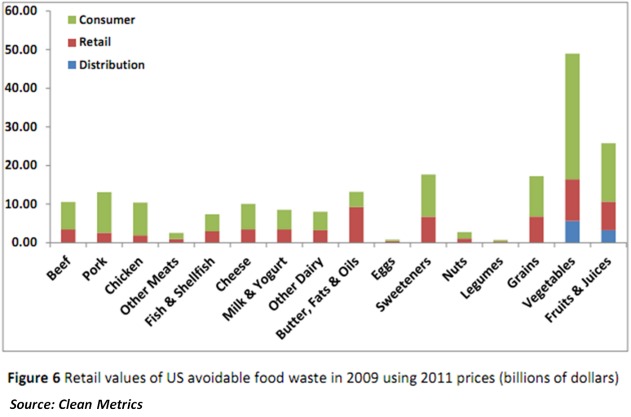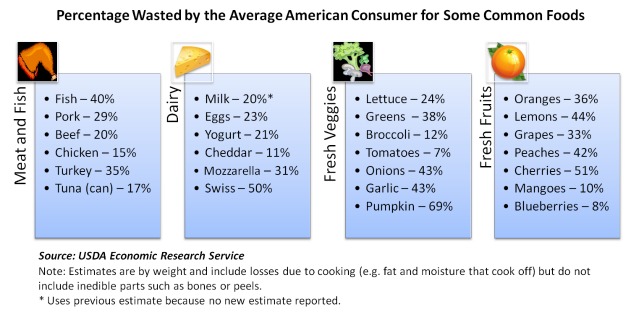There are many steps we can take to turn this food waste trend around, but one of the first is to understand just what we’re wasting.
Using USDA data, a recent report by Clean Metrics [PDF] provides estimates of the retail value of all the food we Americans waste, broken down by categories of meat, dairy, and fresh produce. Note that these numbers summarize the retail value of avoidable wasted food — that is, they do not include bones, peels, and fat that burns off during cooking.

The winner? Vegetables by a long shot. In 2009, U.S. consumers spent a whopping $32 billion on vegetables they bought, never ate, and ended up throwing away. By volume, tomatoes and potatoes are the most common culprits, but that’s partially because they’re also the most commonly eaten vegetables in the U.S. If we look by percentage, greens, onions, peppers, and pumpkins (Halloween?) are tossed at the highest rates.
You know your own food habits best, but here’s a peek into the average American kitchen garbage bin:

(If you’re like me and want to totally geek out on the percentage of eggnog and hazelnuts that go to waste, see this recent USDA report [PDF].)
Take a moment to think about the products on this list that most often go bad in your household. When you go to the store, are you realistic about how much you actually cook and eat? Do you know the best way to store food items, or how to tell when they’re actually bad? (Hint: It’s not necessarily the expiration date. See my previous blog here.) Do you take the time to freeze food you won’t eat in time?
The Love Food Hate Waste site has excellent advice for how to store many different foods and fun recipe tools to help use up specific foods. They also have a portion planner to help you cook just the right amount. NRDC’s new food waste fact sheet [PDF] has tips on what to think about when buying and storing food. And there’s a wealth of knowledge out there in the form of friends, family, and cookbooks. I like The Use-It-Up Cookbook or The Frugal Foodie.
Awareness is the first step, so you’re already well on your way. Now it’s time to take action. Observe your habits, educate yourself, try a new recipe or freeze something you haven’t frozen before, and get on the journey to reducing your food waste, food bills, and food print all at the same time.
A version of this post originally appeared on Switchboard, the blog of the Natural Resources Defense Council.